It looks like you're using an Ad Blocker.
Please white-list or disable AboveTopSecret.com in your ad-blocking tool.
Thank you.
Some features of ATS will be disabled while you continue to use an ad-blocker.
share:
'Where is my leg?'
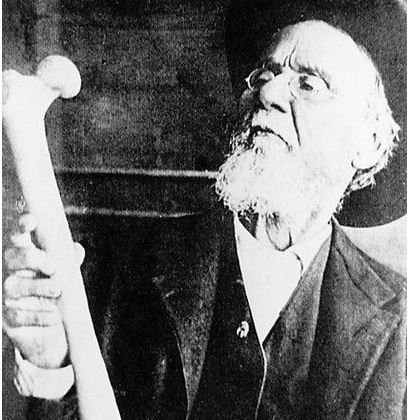
Many of us have some notion of what happens after we die; mostly we can be divided into two sides with one side saying ‘Nothing happens, we’re just dead’ and the other side saying ‘We go on to something else.’ Thanks to religions, the argument about what the ‘something else’ actually means has led a few million people to find out earlier than they chose to.
What if it isn’t as simple as being dead or going into another existence? What if you miss the legendary tunnels of light and find that your consciousness, the voice in your head, is still talking to itself? Would that be a good or a bad thing? You’ve proven that life exists after death, but who cares when you can’t be seen? Would it be lonely being an incorporeal ‘voice’ that nobody else can hear?
In the following account, a drunken Icelandic man was washed away to sea and died. His bones were found on the shore and were buried with little ceremony. So ends the anonymous life of Runki…or maybe not?
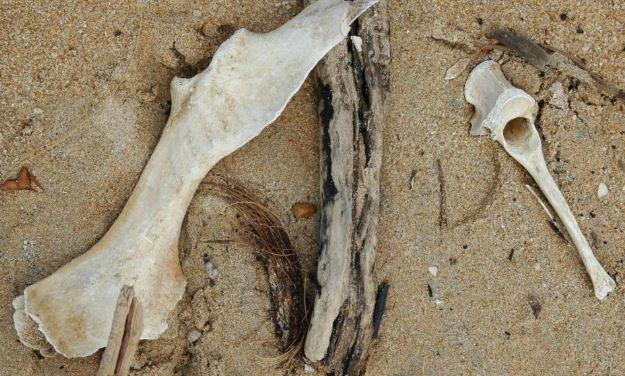
During the 1940s, a group of people were involved in researching the subject of mediums, channelers and séances. If ever a field was infected by charlatans and hoaxers, this is one of them. During one man’s alleged channelling of ‘the spirits,’ he was frequently interrupted by a grumpy character complaining about his leg. In the world of psychical research, these types of communicators are called ‘drop-ins.’ They're considered to be independent characters who offer factual details.
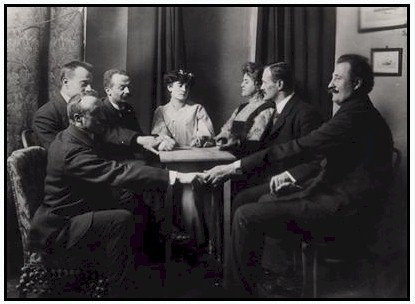
The channeler was called Haffstein Bjornsson and he had a good reputation for ‘paranormal powers’ that went back to his childhood in the 1920s. He found he was being interrupted by someone who was belligerent and argumentative. When this character was asked for a name, he gave the Icelandic equivalents of ‘John Smith’ and questioned why he should tell anyone anything…
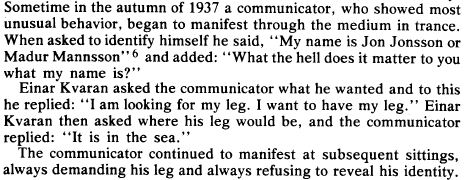
Time went on and Haffsteinn continued to channel for different people and in different locations for different audiences. Our leg-less friend continued to make occasional interruptions until January 1 1939 when a fish merchant attended. The man was Ludvik Gudmundsson and the snarky ‘drop-in’ claimed to know who he was. What’s more, he claimed that Gudmunsson had his missing leg and whilst doing so had Haffstein take snuff and crave a shot of alcohol…
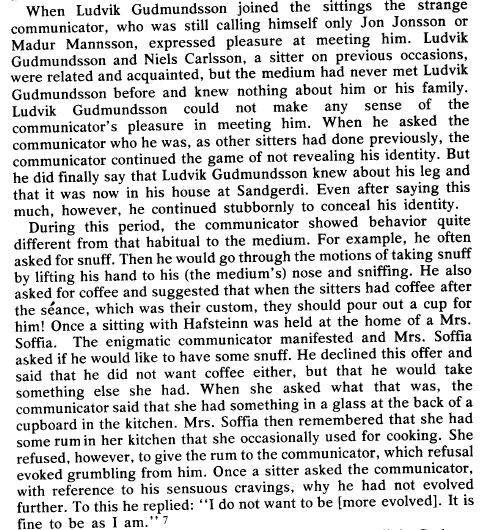
This change in behaviour by the unhappy character quickly led to a breakthrough and something the researchers could get their teeth into. The ‘John Smith’ evasion came to an end and they were suddenly presented with chapter and verse of who he supposedly was and how he came to be missing his leg…
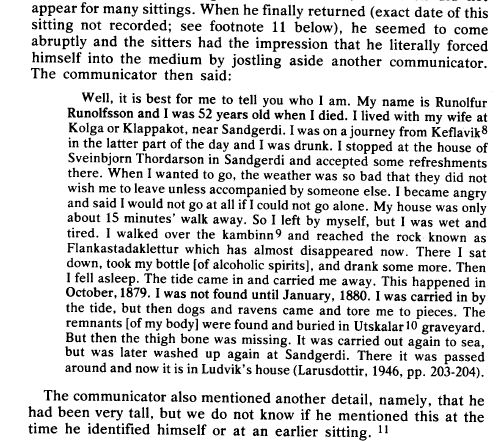
This detail of being ‘very tall’ became something rather interesting when they discovered the missing leg-bone within the wooden walls of the fish merchant’s house. The leg bone was long and clearly came from a tall man. To us, it probably seems very unlikely that anyone would casually leave unknown human bones behind walls or under floors. Superstitions or even common-sense (give to the police!) would dictate our actions. This was apparently not so in turn-of-the-century Iceland. This is how the bone was allegedly discovered…
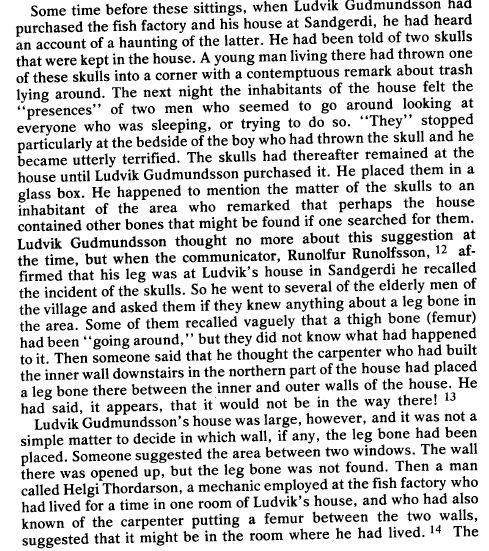
Gudmundsson did the right thing and had the bone placed in a leg-bone-sized coffin and buried with the standard ceremonies. In a movie or urban folklore tale, this is the point where the tunnel of light and a bunch of welcoming entities appear and say soothingly, ‘Your time has come, dear Runki, enter the light and find your peace.’ Maybe there'd be some big-time harp sounds and a choir too?

No such luck here…or simple explanations. The spirit of Runki continued to manifest from time to time and was apparently a very helpful guide for Haffstein. Of course, out there, in whatever firmament or ‘plane of existence’ where such ‘spirits’ do their thing, it’s anyone’s guess if time is linear or even sensible. Maybe he did find some peace and moved on…or faded away.
For our latter day researchers, they couldn’t let the juicy details of name, location and cause of death be wasted could they? Stuff like this is way too big to pass by and they went looking for evidence that Runki was a real person.
Amazingly, he was! Not only had Runolfur Runolfson been a real person, he lived at the right time and died in the same way as claimed by the Runki character. Cool huh? Buried in the Parish records, they found this…

So I guess the discussion about the persistence of consciousness, life after death and heaven is over at last?! Let’s shut the churches and put more funding into psychical research and the pursuit of consciousness! We should invest in channelers, mediums and psychics as fast as we can so we’ll have someone to talk to. I guess life after death is like standing on stage in an empty theatre with the lights out; just a voice in the silent darkness….sigh…
Wait a minute! Not so fast...
Nothing is ever so conclusive and straightforward in the field of paranormal research. Many questions have been raised about the chain of evidence and the primary source of the communication – Haffstein. Is there any way he could have heard about Runki from local folk? Could he have been to the archives and done some background? The answer is an equivocal yes he did. He visited the National Library where these records were kept and denied having done so until his signature was found in the signing-in book. At that point he explained that he’d been there years ago for an unrelated matter and was so long ago that he’d forgotten.
Critics of Haffstein claimed that he had a photographic memory that could retain details of names and families from lots of areas. They suspected he studied these families in detail so that in any large group, somebody would know one of the people he was claiming to channel. He wouldn’t be the first to use these techniques; they’ve been used for centuries. Some ‘psychics’ have admitted rummaging through purses and bedroom drawers to glean information that hooks their paying audience.
One problem with this dismissal of Haffstein as a fraud, is that damned leg-bone! It was remembered by the old-folk and found in the walls of Gudmundsson’s house. Could Gudmundsson have been a co-conspirator with Haffstein? Had they heard the old-folk talk of the bones and concocted the whole Runki character whilst planting a long leg-bone? Without Gudmundsson’s help, how the heck would anyone know that the bone was behind that wall?
Altogether, I found the Runki story interesting enough to write up and post on here. It raises some big thoughts about life and death and what becomes of *us* when the last breath leaves our bodies and that final synapse fails to spark. If we go on to something like Runki’s existence, I’d rather say no thank you as it seems pointless and dull. Who wants to spend forever as themselves?
The alternatives between definitive death or continuing to another place are far more attractive than dumb limbo with the company of mediums and paranormal investigators.

Sources and related links:
The original paper can be read as a pdf - Haraldsson E. and Stevenson, I, 1975. 'A Communicator of the Drop-in Type in Iceland: the case of Runolfur Runolfsson'. Journal of the American Society for Psychical Research 69. 33-59.
Haffstein was tested by Dr Ian Stevenson on another occasion - Haraldson and Stevenson - An Experiment to Test the the Icelandic Medium, Hafstein Bjornstein.
Recent Rhine Events by Dave Roberts
Immortal remains: the evidence for life after death By Stephen E. Braude
How to have a Seance - Tricks of the Fraudulent Mediums
Harry Houdini - Debunking spiritualists
Fraudulent Mediums Act 1951
The original paper can be read as a pdf - Haraldsson E. and Stevenson, I, 1975. 'A Communicator of the Drop-in Type in Iceland: the case of Runolfur Runolfsson'. Journal of the American Society for Psychical Research 69. 33-59.
Haffstein was tested by Dr Ian Stevenson on another occasion - Haraldson and Stevenson - An Experiment to Test the the Icelandic Medium, Hafstein Bjornstein.
Recent Rhine Events by Dave Roberts
Braude said several details in this case were confirmed from “multiple obscure sources,” making it unlikely that the information could have been found by normal means. He added that the already-successful medium did not need such a case to establish his reputation, so there was no reason for fraud on his part. The person with the most to gain was the departed Runki himself.
As alternatives to the spirit hypothesis, Braude provided a list of “usual suspects”: mistakes in observation or reporting, “hidden memories,” or fraud. He said that many cases cannot be explained by these, but then added that some “unusual suspects”—rare or abnormal processes such as dissociation, self-hypnosis, exceptional memory, and extreme forms of savantism—often explain cases attributed to survival.
Immortal remains: the evidence for life after death By Stephen E. Braude
How to have a Seance - Tricks of the Fraudulent Mediums
Harry Houdini - Debunking spiritualists
Fraudulent Mediums Act 1951
I did not read through the whole article because I have an appointment in 30 mins, but it kept me interested. I will keep on reading when I come
back, I want to know what happened with the tall dude that got torn up by dogs and washed up in the sea.
Really interesting story, thanks OP.
Really interesting story, thanks OP.
reply to post by Kandinsky
I was compelled to click on the thread, thinking what in the world has happened to kandinsky?
Indeed, all this life after death conjecture is quite a puzzlement. I consulted a medium following my mother's death, and found much of what she told me to be very reliable. It's a fascinating subject.
If "going into the light" is a valid scenario, perhaps one has a choice to go or not go? Maybe it's the ones who fear to go, who hang around trying to interact with the living.
I was thinking...I believe somewhere in the Bible it states something about "no drunkards in heaven", and if the subject of the article (I can't repeat his name now), knew that, perhaps he was fearful of making the crossover because he knew he was drunk when he died.
Meh, just a thought. Anyway, I'm glad the estranged leg isn't yours.
I was compelled to click on the thread, thinking what in the world has happened to kandinsky?
Indeed, all this life after death conjecture is quite a puzzlement. I consulted a medium following my mother's death, and found much of what she told me to be very reliable. It's a fascinating subject.
If "going into the light" is a valid scenario, perhaps one has a choice to go or not go? Maybe it's the ones who fear to go, who hang around trying to interact with the living.
I was thinking...I believe somewhere in the Bible it states something about "no drunkards in heaven", and if the subject of the article (I can't repeat his name now), knew that, perhaps he was fearful of making the crossover because he knew he was drunk when he died.
Meh, just a thought. Anyway, I'm glad the estranged leg isn't yours.
reply to post by ladyinwaiting
Hiya Lady, thanks for your reply; I think I've posted an ATS clanger here so I'm glad that you also found the account mildly interesting.
I'm genuinely agnostic about these accounts and can't make my mind up either way. Some of them are genuinely interesting and shy away from absolute explanations. As ever, it's a pity that so many frauds and hucksters have camped out and made it difficult to tease out more of the good cases.
If "going into the light" is a valid scenario, perhaps one has a choice to go or not go? Maybe it's the ones who fear to go, who hang around trying to interact with the living.
I'm genuinely agnostic about these accounts and can't make my mind up either way. Some of them are genuinely interesting and shy away from absolute explanations. As ever, it's a pity that so many frauds and hucksters have camped out and made it difficult to tease out more of the good cases.
reply to post by Kandinsky
Fantastic thread once again Kadinsky, I love reading your threads.
It’s a shame there are phoneys out there, but there are also some genuine ones as well.
I do have a few favourites who I feel are honest and do actually care about the deceased and the living.
Anyway why would someone put bones in a wall, unless they had something to hide or were into some sort of bad occult ritual or something sinister.
And who in their right mind has a few human skulls rolling around on their floor. What the hell kind of house was this.
love and harmony
Whateva
Fantastic thread once again Kadinsky, I love reading your threads.
It’s a shame there are phoneys out there, but there are also some genuine ones as well.
I do have a few favourites who I feel are honest and do actually care about the deceased and the living.
Anyway why would someone put bones in a wall, unless they had something to hide or were into some sort of bad occult ritual or something sinister.
And who in their right mind has a few human skulls rolling around on their floor. What the hell kind of house was this.
love and harmony
Whateva
reply to post by Whateva69
Thanks for the nice words!
Have you heard of Elisabeth Kubler-Ross? She changed the way we treat our dying patients in the West and made the subject of terminal illness less of a taboo. She was an incredible person and, through experience, was committed to belief in an afterlife. Here's a couple of pages from Steve Volk's great Fringe-ology book...


'Knocked from her moorings,' means she gradually lost her judgement. Being exposed to so many first-hand accounts of survival after death and some kind of collective consciousness, saw her losing the ability to think straight. She fell prey to a pervert, conman medium who broke up her family and took her money....a total criminal fraud.
It makes me wonder how we can come face-to-face with the possibility of survival after death and not then be tempted to believe all the rip-off folk telling us they can speak to the dead. It's like a slippery slope from, "Wellllll...if this is true, then maybe that is true?" to losing our way.
It’s a shame there are phoneys out there, but there are also some genuine ones as well.
Have you heard of Elisabeth Kubler-Ross? She changed the way we treat our dying patients in the West and made the subject of terminal illness less of a taboo. She was an incredible person and, through experience, was committed to belief in an afterlife. Here's a couple of pages from Steve Volk's great Fringe-ology book...


'Knocked from her moorings,' means she gradually lost her judgement. Being exposed to so many first-hand accounts of survival after death and some kind of collective consciousness, saw her losing the ability to think straight. She fell prey to a pervert, conman medium who broke up her family and took her money....a total criminal fraud.
It makes me wonder how we can come face-to-face with the possibility of survival after death and not then be tempted to believe all the rip-off folk telling us they can speak to the dead. It's like a slippery slope from, "Wellllll...if this is true, then maybe that is true?" to losing our way.
reply to post by Kandinsky
Wow that’s amazing Mrs Schwartz actually had an OBE, I wonder if this was a defence mechanism, so she didn’t have to go through the pain and shock of being bought back.
And the first one, I could defiantly believe that a deceased family member could possibly show oneself to a sick child, and stay with them for comfort.
DOH: Oh crap my 14 year old kept coming in and interrupting my chain of thought lol now I forgot what I was going say. Ill get back to you in another post once I remember .
Wow that’s amazing Mrs Schwartz actually had an OBE, I wonder if this was a defence mechanism, so she didn’t have to go through the pain and shock of being bought back.
And the first one, I could defiantly believe that a deceased family member could possibly show oneself to a sick child, and stay with them for comfort.
DOH: Oh crap my 14 year old kept coming in and interrupting my chain of thought lol now I forgot what I was going say. Ill get back to you in another post once I remember .
reply to post by Kandinsky
Oh I remember now
I think this can happen not just with people missing a loved one, but with gamblers and the poor, you have won $$$$..After all that wishing and praying they think their prayers have been answered.
Some people want so badly to have their wishes or prayers answered they become gullible, well that’s not the word I’m looking for, but you know what I mean, it leaves them open for anyone wanting to take advantage. And the cruel phoneys do
Oh I remember now
I think this can happen not just with people missing a loved one, but with gamblers and the poor, you have won $$$$..After all that wishing and praying they think their prayers have been answered.
Some people want so badly to have their wishes or prayers answered they become gullible, well that’s not the word I’m looking for, but you know what I mean, it leaves them open for anyone wanting to take advantage. And the cruel phoneys do
reply to post by Whateva69
Yeah, I get you. It's a hard subject to get a fix on with so much bickering and folk trying to con others all the time. If we start seeing what
we want to see, we're lost. Like I said in the OP, I'm not sure whether flat death appeals to me more or the 'somewhere else' alternative view so
I don't know what, if anything, I 'want to see.'
I've been reading and listening to a lot of stuff and try to keep an open mind but still be wary of going Kubler-Ross' way and accepting *anything and everything.*
I've been reading and listening to a lot of stuff and try to keep an open mind but still be wary of going Kubler-Ross' way and accepting *anything and everything.*
Awesome thread. It's so nice to stumble upon one of these (no pun intended). I'm going to read more and be back, I just want this to get more
exposure.
reply to post by Domo1
yeah its a great thread topic, i;ll have to wait untill tomorrow to get deeper into it, as i have a 14 year old behaving like a 5 year old at the moment.
edit to add : i cant really say that she behaved better as a 5 year old than she is now lol
yeah its a great thread topic, i;ll have to wait untill tomorrow to get deeper into it, as i have a 14 year old behaving like a 5 year old at the moment.
edit to add : i cant really say that she behaved better as a 5 year old than she is now lol
edit on 20/11/11 by Whateva69 because: (no reason
given)
a reply to: Kandinsky
Fascinating stuff! I've read some older Icelandic ghostly tales that appear in the sagas but never anything more modern.. it's such a vivid story, and with such a grumpy and almost mischievous spirit it really tempts me to believe, though i totally lean towards it being a set-up.
And yar, the idea of my spirit being tied to my rotting corpse forever is not overly attractive, especially if folk were to keep prodding me and asking me a bunch of questions when I'd rather be bothering unwary travellers and spooking the local cattle.
Very cool thread
Fascinating stuff! I've read some older Icelandic ghostly tales that appear in the sagas but never anything more modern.. it's such a vivid story, and with such a grumpy and almost mischievous spirit it really tempts me to believe, though i totally lean towards it being a set-up.
And yar, the idea of my spirit being tied to my rotting corpse forever is not overly attractive, especially if folk were to keep prodding me and asking me a bunch of questions when I'd rather be bothering unwary travellers and spooking the local cattle.
Very cool thread
a reply to: skalla
I stumbled on this old thread looking for something else and gave it a bump lol. Glad you liked it...spent friken ages reading up on it before posting it and it died like a kitten's fart in a forest.
As I was reading it again, I tend towards two ideas. One is that the guy prepped for years and then launched it. Second is there's some truth to the account and we don't have the answers. The first seems like a lot of effort for sweet FA and the second doesn't make much sense. : )
That darned leg-bone still defines the account and remains a puzzle as to how the 'psychic' guy could have known about it.
I stumbled on this old thread looking for something else and gave it a bump lol. Glad you liked it...spent friken ages reading up on it before posting it and it died like a kitten's fart in a forest.
As I was reading it again, I tend towards two ideas. One is that the guy prepped for years and then launched it. Second is there's some truth to the account and we don't have the answers. The first seems like a lot of effort for sweet FA and the second doesn't make much sense. : )
That darned leg-bone still defines the account and remains a puzzle as to how the 'psychic' guy could have known about it.
a reply to: Kandinsky
It may surprise a few folk, but i wouldn't dismiss a paranormal explanation. IMO people get tied to their land and their habits and Iceland is a curious place, even in this story you can see how features in the land can have personal names - like the rock that the guy sat on to drink his booze.
I'm going all woo here, but i often feel that such things can lend a strange power to a place.
It may surprise a few folk, but i wouldn't dismiss a paranormal explanation. IMO people get tied to their land and their habits and Iceland is a curious place, even in this story you can see how features in the land can have personal names - like the rock that the guy sat on to drink his booze.
I'm going all woo here, but i often feel that such things can lend a strange power to a place.
edit on 25-4-2015 by skalla because:
typo
you know dying is a bad deal, the only question is how bad which we get to find out.
Carousel begins
Carousel begins
a reply to: skalla
I hope it is BS just because the idea of that type of afterlife terrifies me. Just hanging around without point or purpose and all anchored to some physical object or location. It's hellish isn't it? Gives me the creeps just thinking about it.
Years back, there was an interview with some female BBC reporter/face. She said she'd bought a 19th century diary - written by a Jewish guy. On one page, he describes himself and two travellers staying the night at some inn and having nightmares all night; people screaming, lots of pain etc.They couldn't sleep and left early next day in a hurry.
The dude was only sleeping in bloody Auschwitz! Top coincidence! 50 odd years earlier and who knows?? Like you say, maybe places accrete some unusual qualities.
I hope it is BS just because the idea of that type of afterlife terrifies me. Just hanging around without point or purpose and all anchored to some physical object or location. It's hellish isn't it? Gives me the creeps just thinking about it.
Years back, there was an interview with some female BBC reporter/face. She said she'd bought a 19th century diary - written by a Jewish guy. On one page, he describes himself and two travellers staying the night at some inn and having nightmares all night; people screaming, lots of pain etc.They couldn't sleep and left early next day in a hurry.
The dude was only sleeping in bloody Auschwitz! Top coincidence! 50 odd years earlier and who knows?? Like you say, maybe places accrete some unusual qualities.
new topics
-
Pure Love is simple.
Philosophy and Metaphysics: 10 minutes ago -
Interesting timing 40 monkeys flee medical lab in US
Diseases and Pandemics: 33 minutes ago -
All Talk No Walk Celebrities Blowing Smoke
US Political Madness: 2 hours ago -
Arizona and Nevada Called for Trump – Giving Trump 312 Electoral Votes
2024 Elections: 2 hours ago -
A question about abortion and the states
US Political Madness: 5 hours ago -
What shenanigans are at play with the house races?
2024 Elections: 6 hours ago -
Young People and Social Media
Social Issues and Civil Unrest: 9 hours ago
top topics
-
DOJ moving to wind down Trump criminal cases before he takes office
Mainstream News: 16 hours ago, 13 flags -
Young People and Social Media
Social Issues and Civil Unrest: 9 hours ago, 10 flags -
What shenanigans are at play with the house races?
2024 Elections: 6 hours ago, 10 flags -
Arizona and Nevada Called for Trump – Giving Trump 312 Electoral Votes
2024 Elections: 2 hours ago, 8 flags -
A question about abortion and the states
US Political Madness: 5 hours ago, 7 flags -
All Talk No Walk Celebrities Blowing Smoke
US Political Madness: 2 hours ago, 6 flags -
DC Votes
US Political Madness: 15 hours ago, 5 flags -
Interesting timing 40 monkeys flee medical lab in US
Diseases and Pandemics: 33 minutes ago, 5 flags -
Pure Love is simple.
Philosophy and Metaphysics: 10 minutes ago, 0 flags
active topics
-
Labour MP Mike Amesbury Repeatedly Punches Man to the Ground
Politicians & People • 15 • : gortex -
All Talk No Walk Celebrities Blowing Smoke
US Political Madness • 28 • : Vermilion -
Interesting timing 40 monkeys flee medical lab in US
Diseases and Pandemics • 3 • : Ravenwatcher -
Arizona and Nevada Called for Trump – Giving Trump 312 Electoral Votes
2024 Elections • 14 • : WeMustCare -
Pure Love is simple.
Philosophy and Metaphysics • 0 • : BrotherKinsMan -
A question about abortion and the states
US Political Madness • 26 • : Shoshanna -
What shenanigans are at play with the house races?
2024 Elections • 23 • : xuenchen -
The Acronym Game .. Pt.4
General Chit Chat • 916 • : tinkerbell99 -
-@TH3WH17ERABB17- -Q- ---TIME TO SHOW THE WORLD--- -Part- --44--
Dissecting Disinformation • 3164 • : angelchemuel -
On Nov. 5th 2024 - AMERICANS Prevented the Complete Destruction of America from Within.
2024 Elections • 88 • : SideEyeEverything1
